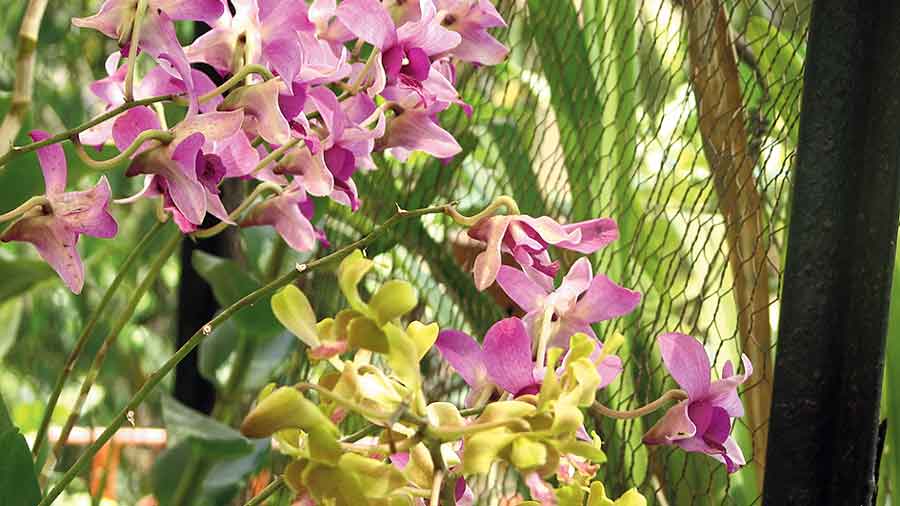Delicate, dainty and a thing of beauty: Orchids may not be easy to grow but the joy of watching these flowers blossom under your care is unparalleled. Orchids are a diverse and widespread family of flowering plants with blooms that are often fragrant, colourful and long-lasting. They are of nearly 1,000 genera and more than 25,000 species distributed throughout the world. Orchids are primarily herbaceous or non-woody plants. They may be epiphytic — growing on trees — terrestrial — growing on the ground — or lithophytic — growing in or on rocks. Orchids are classified into three different categories
- Cool-temperature varieties
- Intermediate-temperature and
- Warm-temperature varietiesIn Calcutta we generally cultivate the warm variety of Orchids such as Dendrobium, Phalaenopsis, Cattleya, Oncidium, Vanda, Bulbophyllum etc. Dendrobium Orchids - these are more than 1,800 species of these that are found in diverse habitats throughout south, east and southeast Asia, including China, Japan, India, Vietnam, Philippines, Indonesia, Australia, New Guinea and many islands of the Pacific ocean.The Dendrobium genus is further classified into five distinct groups
- Dendrobium phalaenopsis
- Dendrobium spatulata
- Dendrobium latouria l
- Dendrobium formosae / Nigrohirsutae and
- Dendrobium phalaenopsis - These Dendrobiums resemble the moth-shaped flower of the Phalaenopsis Orchid. They are also the most commonly found in the market since they are the most hybridised plant.The pseudo bulbs on these Orchids are cylindrical canes that grow nearly two to four feet. Their smaller rubbery leaves are around two to six inches long. They need a rest from water twice a year, when we should refraining from watering them. Dendrobium Affine and Dendrobium Bigibbum are examples of these. Dendrobium Spatulata - These have long, spatula-like projections that spiral into unique-shaped flowers. They are sometimes called Antelope Dendrobiums because their spatulas look like antelope horns. They don’t require a rest period from water and bloom several times a year. They are not deciduous Orchids. Examples include Dendrobium Antennatum, Dendrobium Discolor etc.
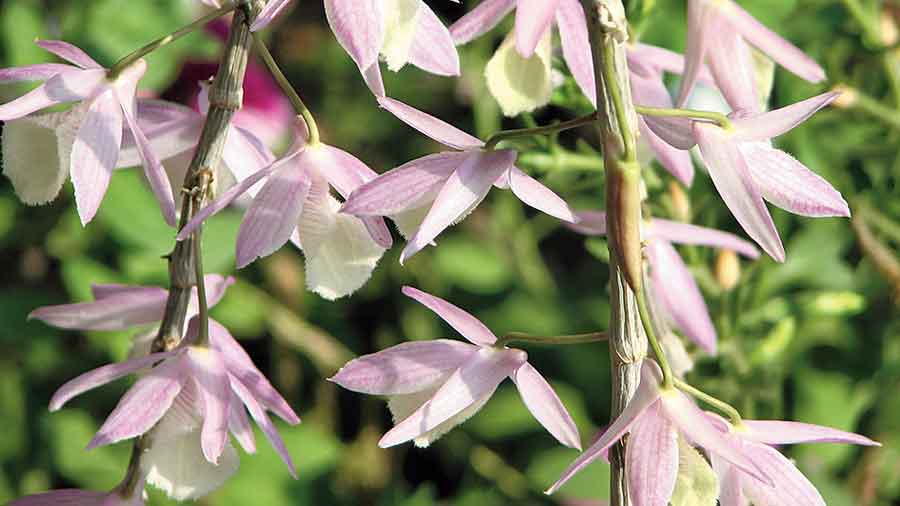
Dendrobium Latouria - Latouria means lock of long untied hair. These Orchids have hairy labellums (lips/ bottom petals where the pollinators can land) and so are called Latouria Dendrobiums. These Orchid canes are short and stumpy, with smaller rhizomes and pseudobulbs. They are intermediate and high-light Orchids. Keep them a little drier during the winter rest period, without water. Examples include Dendrobium Macrophyllum, Spectabile, Forbesii etc.
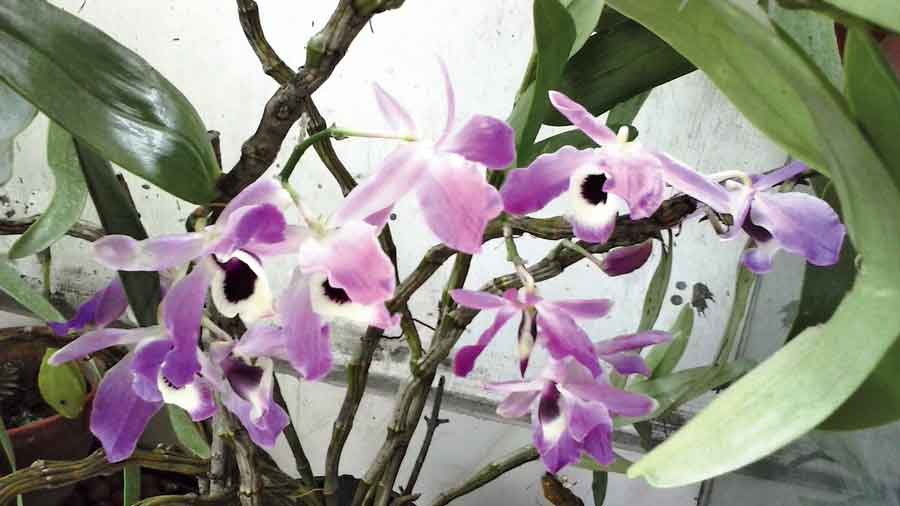
Dendrobium Formosae - In Latin "Formosa" means beautifully formed. Blossoms of this plant are big and look spectacular, hence the name. It likes heavy rains, high sun and a cooler winter. They need winter rest. Dendrobium Formosum, Bellatulum and Dearei are examples of the Formosae.
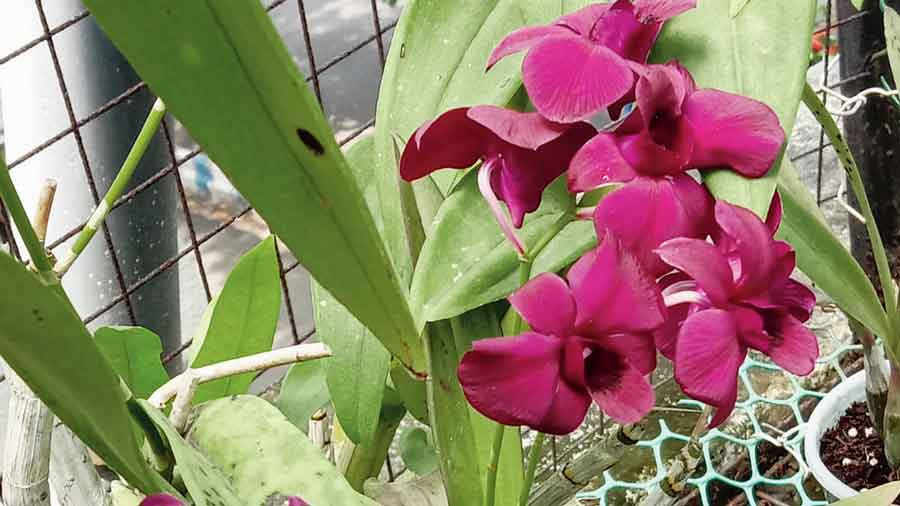
Dendrobium - Finally, the most common type of the Dendrobium species. Most of these are pendulous and the most popular one is Dendrobium Nobile. Nobile Orchids are found in cooler-growing climates or higher altitudes. They thrive in the cooler mountain bases with temperatures of around 27 degrees C during the day, that drops to 20 degree C at night. They need a full winter’s rest from watering and during this time, they shed their leaves completely. Examples include Dendrobium Nobile, Anosmum, Chrysanthum and Moschatum.
General careLight: Orchids need lots of light. They can tolerate direct light in the morning till 9am and after that indirect sunlight would be suitable. They need about 50 to 60 per cent sunlight. Inadequate light will only encourage foliar growth.
Temperature: Dendrobium Orchids grow well between 20 and 28 degree Celsius. But they can tolerate much more heat if air circulation is good.

Water: Water these plants thoroughly during the morning. Regularity in watering will depend on the media/ pot that you use for the Orchid. For instance, coconut husks will retain moisture for a longer time and should be allowed to dry out before watering the Orchid afresh. If it is nearly dry then, go ahead and water. Bark chips/ cinder/ small brick pieces will help dry out quickly. So water them in a frequent intervals.
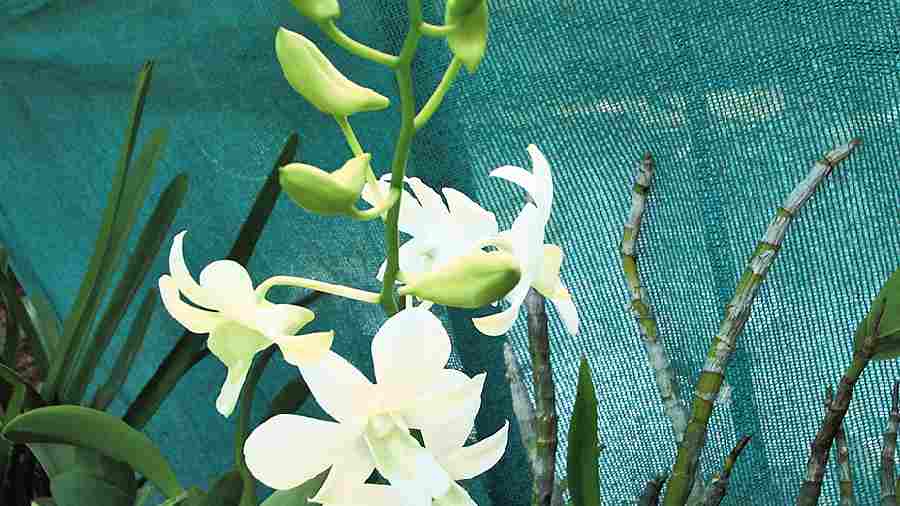
Potting media: Use wood charcoal/ small brick pieces/ medium-sized cinder. I will not suggest using coco peat or coconut husk as they hold excess water and the roots will start to rot.
Fertiliser: Use 1ml balanced N:P:K (20:20:20/ 19:19:19) per litre of water and spray the whole plant fortnightly. Orchids like to be root-bound in small pots and all of them like to receive bright light.
